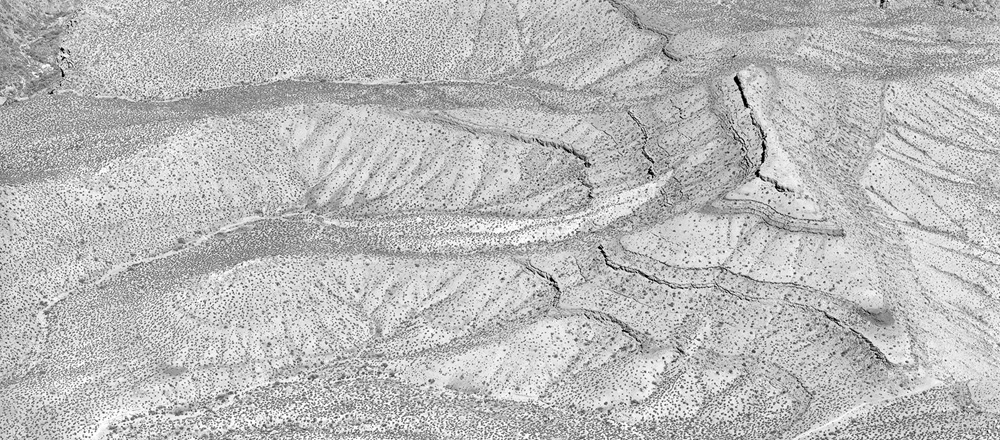Review
Counterpoint in Light and Dark
Counterpoint in Light and Dark
by Irene Legorio
Monterey Photographer and workshop instructor Huntington Witherill has developed an unconventional method of printing his 5x7-inch negatives of traditional California and American Southwest landscapes by emphasizing the light tones and minimizing the middle and dark values.
Three silver prints in his current exhibition at The Friends of Photography Gallery in Carmel are excellent illustrations of what can transpire when a traditional landscape subject is printed in his high-key style.
Although the first of the three prints‚ a wind- swept Death Valley "Dune Form" bisected into sections of almost equal size by a knife-sharp ridge‚ demonstrates awareness of the f/64 school, it would never be mistaken for one of Edward Weston's contrasty black-and-white images of the Oceano sand dunes.
Witherill's print is a highly calculated but reductive visual statement executed on the order of a Georgia O'Keefe painting and very much in key with the current rediscovery of abstract and minimal art.
The second silver print, an 11x14 inch image entitled: "Pool and Cascade," is a fine example of the illusionist compression of pictorial space which occurs when light tonal values are emphasized. In this instance, the pool imparts the impression of being a flat form pressing down upon a rocky granite landscape, whereas it actually occupies a deep depression in the stony environment.
When carried to extremes, Witherill's interest in light tonalities reduces the grandeur and magnitude of an awesome landscape to a delicate pattern of dots and dashes seemingly made with pen and ink in the hands of man, instead of by natural forces.
The most dramatic example in his show is a silver print of the Grand Canyon's "Tonto Plateau" which reads as a succinct summary of the unusual vision that has entered his photography.
Reprinted from the Monterey Herald, June 23, 1986

